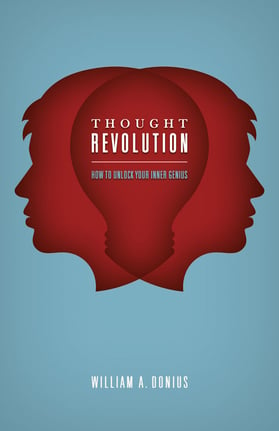 As we age, neuroscientists tell us, our thoughts and patterns become more ingrained. The way our brains process, sort and ultimately respond to questions is akin to taking the same path through the garden over and over. We get to know the path very well, and it becomes familiar to us. As long as the problems we face are familiar, so are our approaches to solving these problems. We are in our intellectual “comfort zones.”
As we age, neuroscientists tell us, our thoughts and patterns become more ingrained. The way our brains process, sort and ultimately respond to questions is akin to taking the same path through the garden over and over. We get to know the path very well, and it becomes familiar to us. As long as the problems we face are familiar, so are our approaches to solving these problems. We are in our intellectual “comfort zones.”
What happens if our efforts to solve a problem aren’t producing innovative results? The thought might occur to us, “How do I go about thinking differently?” When we are asked to deviate from the paths ingrained in our minds, it may seem like an interesting notion, but here’s where the going gets tough. Despite trying to think differently, we typically end up with little to show for our efforts. Our steps continue to lead us down the same old garden path.
Why is it so difficult to achieve innovative breakthroughs in thinking? I’m not a neuroscientist, but I’ll hazard a guess based on my intensive research over several years in the course of writing my book on the subject, Thought Revolution: How to Unlock Your Inner Genius.
Since our thought processes are holistic and ingrained, we tend to arrive at familiar responses to most problem-solving questions. Our brains act like survival mechanisms; consequently, we learn what we need to do to keep us alive and evolving as a species. If we heard a loud noise in the past associated with a near-death experience, we tend to adjust our response the next time we hear a similar noise.
Absent that experience, we are more likely to respond to a loud noise by staring, covering our ears, or looking around to see where the noise came from. Ever notice how difficult it is to break out of our patterns and behaviors? Popcorn at the movies? Driving to work a specific way? Sitting in the same pews in church or the same chairs in a conference room? We stick to the same path because it’s what we know.
When we’re asked to think differently, we’re essentially being asked to take a path through the proverbial garden we’ve never taken before. It’s a bit uncomfortable, for we’re no longer in familiar territory. If asked to deviate too far from our comfort zone, we may even experience a mild panic.
How, then, do we break out of our intransigent ways of thinking? Research demonstrates that we can indeed learn to think differently. Some 50 years ago, Nobel Prize-winning neuroscientist Roger Sperry discovered a new path by studying the independence of consciousness between the left and right hemispheres of the brain. His pioneering work led to breakthrough, best-selling books applying the implications of his research both to learning how to draw (Drawing on the Right Side of the Brain by Betty Edwards) and learning how to resolve psychological traumas (Recovery of Your Inner Child, by Lucia Capacchione, Ph.D.).
In both books, the authors describe the technique of using the non-dominant hand as the pathway to specifically activate the right hemisphere of the brain. Why the right hemisphere? Scientifically identified as the source of innovation (important for problem solving), insight and intuitiveness, and creativity, the right hemisphere is a valued destination. Neuroscientists have made amazing discoveries in this area of research by studying those with brain injuries, split brains due to severed corpus callosums, and brain scans of individuals performing creative functions.
How exactly can we activate the right hemisphere? The simple act of using our non-dominant hand combined with suspending the conventional thought process allows synapses to fire in a manner that taps directly into the right hemisphere. Sound bizarre? As a former CEO, I’ve used this technique for over a decade as a way to think more creatively. I’ve also observed hundreds of others do so while conducting research for my book.
Tapping into the right brain is much more than the simple motor skill of writing with the non-dominant hand. Suspend judgment and allow the answer to the question you posed to flow from the right hemisphere through the neural pathway to the non-dominant hand. That answer will likely surprise you!
Author Bio:

William Alan Donius’ first book, Thought Revolution: How to Unlock Your Inner Genius (March 2012, Changing Lives Press) debuted in a dramatic fashion making all the major Best Seller lists including the New York Times, Wall Street Journal, USA Today, Publisher’s Weekly and Nielsen lists.
He currently serves on the Human Rights Campaign Board in Washington, D.C., writes for the Huffington Post and is working on a second book.
Broadening the perspective from his first book, this time the focus is on corporate America. What happens when organizations apply the methodology for tapping into the right hemisphere of the brain as a means for disrupting complacency and conventional thinking? The early results are very encouraging, including: substantial bottom line increases, boosting the company to a new level and an entirely re-imagined entity.